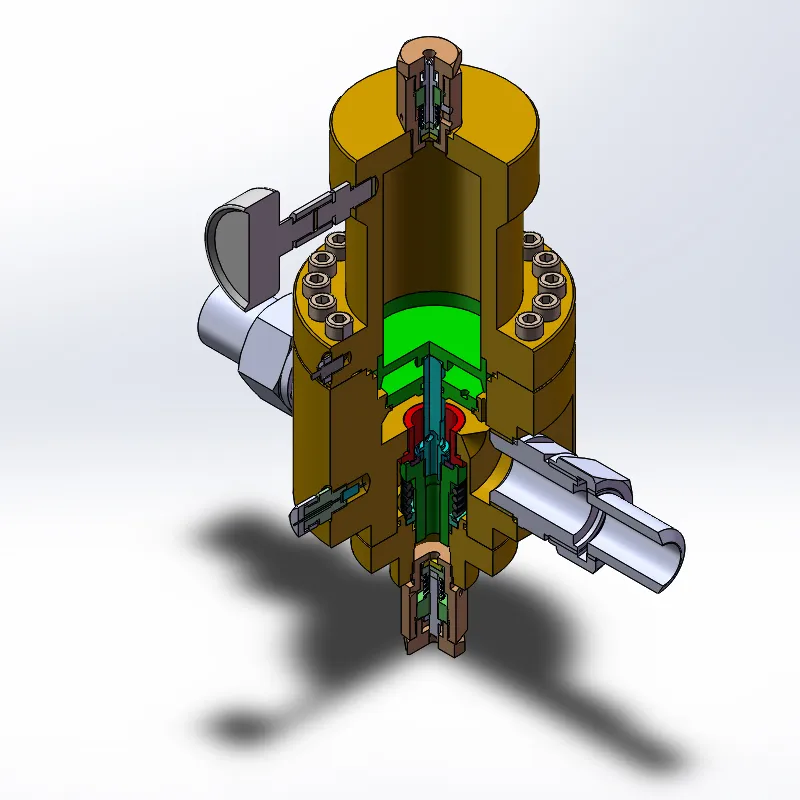
Dec . 05, 2024 01:37
Back to list
Natural Gas Pressure Regulation Station Design and Operation Guidelines
Understanding Natural Gas Pressure Reducing Stations
Natural gas is a critical energy source, powering homes, industries, and vehicles across the globe. However, the transport of natural gas involves significant engineering challenges, particularly relating to pressure management. This is where natural gas pressure reducing stations come into play.
What is a Pressure Reducing Station?
A natural gas pressure reducing station is a facility used to reduce the pressure of natural gas as it flows from high-pressure transmission pipelines to lower-pressure distribution systems. High pressure is necessary for the efficient transportation of natural gas over long distances, but before it reaches consumers, the pressure must be reduced to safe and usable levels. These stations serve as the crucial points of transition, ensuring the safe and efficient delivery of gas.
The Importance of Pressure Reduction
The pressure of natural gas must be managed carefully to ensure safety and efficiency. High-pressure gas can pose significant risks, including the potential for leaks and explosions if not handled properly. Moreover, most end-use applications, such as home heating and industrial processes, require gas at a much lower pressure. A pressure reducing station transforms high-pressure gas into a lower pressure suitable for consumption, thereby playing a vital role in the overall natural gas supply chain.
Components of a Pressure Reducing Station
A typical natural gas pressure reducing station consists of several key components
1. Inlet and Outlet Valves These valves control the flow of gas in and out of the station. They can isolate the station for maintenance or emergencies.
2. Pressure Regulators The core function of the station, pressure regulators, automatically adjust to reduce the gas pressure to the desired level, maintaining it within predetermined limits.
natural gas pressure reducing station

3. Filter Units These components remove impurities and particulates from the gas to protect downstream equipment and ensure efficient operation.
4. Control Systems Modern stations incorporate advanced control systems that monitor the pressure, flow rates, and other critical parameters in real-time. This data allows for adjustments to be made quickly if any issues arise.
5. Safety Devices Safety is paramount in pressure reducing stations. These may include pressure relief valves, which release gas if the pressure exceeds safe levels, and emergency shut-off systems that can deactivate the station in case of a failure.
Operational Procedures
Operational efficiency and safety protocols are vital aspects of running a pressure reducing station. Operators regularly inspect and maintain the equipment to prevent failures and ensure optimal performance. Maintenance schedules often include checking regulators, valves, and filters for wear and tear. Additionally, training personnel to respond to emergencies and manage the station's operations is essential for minimizing risks.
Environmental Considerations
With growing concerns about climate change and environmental impact, pressure reducing stations are adapting to include more environmentally friendly practices. This can include capturing vented gases, implementing energy-efficient technologies, and ensuring that the station operates within environmental regulations. Optimizing the station’s processes through improved technology also plays a part in minimizing emissions associated with natural gas processing and transport.
Conclusion
Natural gas pressure reducing stations are pivotal in ensuring the safe and efficient transport of natural gas from high-pressure transmission lines to lower-pressure distribution systems. They consist of various components designed to regulate and maintain appropriate pressure levels while adhering to safety and environmental standards. As the energy landscape evolves, these stations will continue to adapt, ensuring that natural gas remains a reliable and safe source of energy for consumers worldwide. Understanding their function and importance highlights how vital infrastructure supports our everyday energy needs. From residential heating to industrial applications, the careful management of natural gas pressure is crucial for both safety and efficiency, ensuring that this resource is delivered effectively to meet global demands.
Next:
Latest news
-
Safety Valve Spring-Loaded Design Overpressure ProtectionNewsJul.25,2025
-
Precision Voltage Regulator AC5 Accuracy Grade PerformanceNewsJul.25,2025
-
Natural Gas Pressure Regulating Skid Industrial Pipeline ApplicationsNewsJul.25,2025
-
Natural Gas Filter Stainless Steel Mesh Element DesignNewsJul.25,2025
-
Gas Pressure Regulator Valve Direct-Acting Spring-Loaded DesignNewsJul.25,2025
-
Decompression Equipment Multi-Stage Heat Exchange System DesignNewsJul.25,2025

